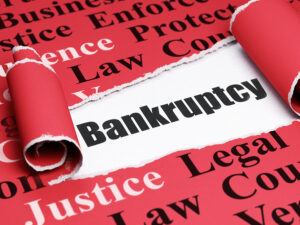Do I Qualify for Bankruptcy in Tulsa Oklahoma?
Do I Qualify for Bankruptcy in Tulsa Oklahoma?

People frequently ask “do I qualify for bankruptcy in Tulsa?” In light of recent events, more Americans are asking themselves this question every day. Each bankruptcy case is unique. However, there are some basic questions you can ask yourself:
- Do you have more than one credit card with a balance at or near the credit limit; in other words “maxed out?”
- Are you using credit cards to pay for day-to-day expenses like groceries, utilities, and gasoline?
- Are you only paying the minimum payment due on your credit cards?
- Does most of your paycheck go toward paying credit card debt?
- Are you 30 days late on more than one bill?
If your credit card debt is greater than 2 months of your household income, then the debt is likely unmanageable given the fees and high interest rates. In this type of situation, it is almost mathematically impossible to pay off your credit card debt without a dramatic increase in your income. Are you expecting a huge spike in your income very soon that will pay off those debts? If you are like most hard-working Americans, that huge increase in pay will not come soon enough, if at all.
The bottom line is if you are struggling to pay your debts, you may qualify to file for debt relief in Oklahoma under Chapter 7 or Chapter 13 of the Bankruptcy Code. There are some guidelines you have to meet in order to file for bankruptcy in Oklahoma. Bankruptcy law can be complicated and hard to understand. To actually determine your eligibility to file, you have to get legal advice from a Tulsa, Oklahoma bankruptcy law firm.
Another issue to consider is whether you have previously filed for bankruptcy protection. If you have, there are important time frames that apply. The time frames are from filing date to filing date:
- Eight (8) years between Chapter 7 bankruptcies;
- Two (2) years between Chapter 13 bankruptcies;
- Four (4) years between Chapter 7 bankruptcy and Chapter 13 bankruptcy;
- Six (6) years between Chapter 13 bankruptcy and Chapter 7 bankruptcies, (the exception to this six year rule is if the previous Chapter 13 case provided for 100% payment of the unsecured debts, or the plan provided for payment of at least 70% of the unsecured claims, was filed in good faith, and was the debtor’s best effort).
If you have not previously filed for bankruptcy, or you are eligible because you are outside of the limitations periods, the next issue is the “Means Test,” which is used to determine your current income and whether you qualify for Chapter 7. The Means Test takes into consideration your income from the six months prior to filing compared to the median income for families the same size as yours that live in your county in Oklahoma. If your income is above the median for your family size, you may have to file for Chapter 13 bankruptcy instead of Chapter 7. However, you may still qualify for Chapter 7. This is where the complicated Oklahoma Means Test formula is applied. Certain expenses like medical bills, insurance premiums, tithes or charitable donations, or tax withholdings can be applied to reduce your family’s gross income under the median so you can still qualify for Chapter 7.
The Means Test was designed to keep high wage earners from filing for Chapter 7 to eliminate all of their debts and to force them into Chapter 13 to repay a portion of their debts. Having to take the Means Test does not mean that you have to be penniless to utilize Chapter 7 bankruptcy. Many people earn significant monthly income and still qualify for Chapter 7 bankruptcy, especially if they have high expenses, like a home mortgage and car loan payments (although they must be reasonable), taxes, and certain other expenses.
Schedule a FREE initial consultation to see if you qualify for bankruptcy in Tulsa and discuss your debt situation and to find out how we can help secure a stronger financial future for you and your family.
*We are a debt relief law firm in Tulsa, Oklahoma.
*We help people file for bankruptcy relief under the Bankruptcy Code.
